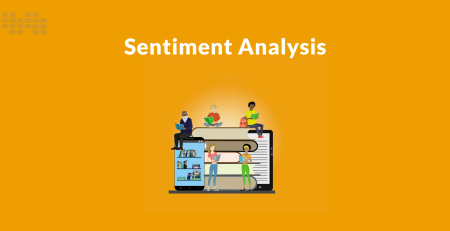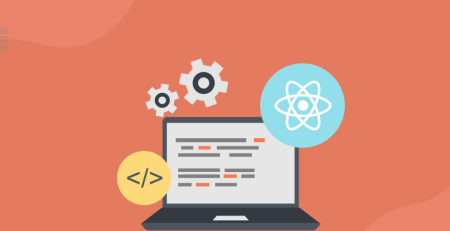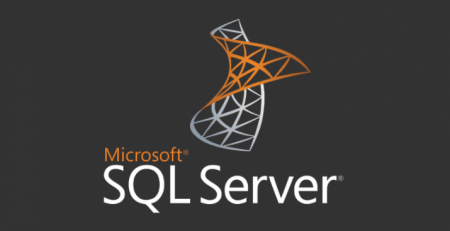Backend as a Service: Redefining the Developer Experience
Table of Contents
Introduction
In this thorough tutorial we will dive deep into the Backend as a Service and see how it affects the developer experience. We’ll review everything starting from better collaboration, scalability, security, development streamlining and ending with these and other topics. We’ll include samples of code as we go to emphasize key concepts and to demonstrate the functionality of BaaS.
In software development, what is crucial are effectiveness, flexibility which the field is rapidly changing. Developers are always looking for methods to improve efficiency, shorten time-to-market, and concentrate on what really counts: Excellent products creation. The developer experience is being disruptively transformed by Backend as a Service (BaaS) solutions that surfaced as such journeys were being made.
1. Introduction to Backend as a Service (BaaS)
In today’s world of software development, efficiency and agility are critical. But the difficulties of developing and maintaining backend infrastructure frequently divert developers’ attention from what really counts, which is making creative and user-focused apps. This is where the development landscape is revolutionized by Backend as a Service (BaaS).
What is Backend as a Service (BaaS)?
A cloud computing architecture called Backend as a Service (BaaS) gives developers access to ready-to-use backend services and infrastructure. By abstracting away the difficulties involved in backend development, it frees developers to concentrate on creating frontend user interfaces and application logic rather than worrying about scaling infrastructure, maintaining servers, or maintaining databases.
Fundamentally, APIs or SDKs are used by BaaS to provide developers with an easy-to-integrate set of pre-built backend components and functions for their applications. Serverless computing, push notifications, data storage, file storage, authentication, and more are frequently included in these components. Developers may shorten time-to-market, speed up development cycles, and handle resource allocation more effectively by utilizing BaaS.
Why does BaaS matter?
BaaS matters because it empowers developers to overcome the challenges associated with backend development. Traditionally, building a robust backend infrastructure required significant time, resources, and expertise. Developers had to provision servers, configure databases, implement security measures, and manage scalability—all of which diverted attention from building features that deliver value to users.
These obstacles are gone with BaaS. Using the infrastructure management, security, and scalability know-how of BaaS providers, developers can swiftly include backend services into their apps. This frees up developers to concentrate on creating unique features, iterating quickly, and providing outstanding user experiences.
Key Benefits of BaaS:
- Speed and Efficiency: BaaS accelerates development cycles by providing pre-built backend components that can be easily integrated into applications, saving developers time and effort.
- Focus on Innovation: By abstracting away backend complexity, BaaS enables developers to focus on building innovative features and enhancing user experiences, driving competitive differentiation.
- Scalability and Flexibility: BaaS solutions are designed to scale seamlessly to accommodate growing user bases and fluctuating workloads, ensuring optimal performance and reliability.
- Cost-effectiveness: BaaS reduces the upfront and ongoing costs associated with building and managing backend infrastructure, making it accessible to startups and enterprises alike.
- Security and Compliance: BaaS providers implement robust security measures and compliance standards, ensuring the confidentiality, integrity, and availability of data.
Backend as a Service (BaaS) is transforming the way developers build and deploy applications. By abstracting away backend complexity and providing ready-to-use infrastructure and services, BaaS empowers developers to focus on innovation, accelerate development cycles, and deliver exceptional user experiences. In the following sections of this guide, we’ll explore the myriad ways in which BaaS redefines the developer experience and unlocks new possibilities for software development.
2. Streamlined Development Process
In the fast-paced world of software development, efficiency is crucial. The ability to streamline the development process can make all the difference in meeting deadlines, staying within budget, and delivering high-quality products. Backend as a Service (BaaS) plays a significant role in achieving this goal by simplifying and accelerating various aspects of development.
Traditional Development Challenges
Creating an application’s backend architecture often entails a number of laborious procedures. Among the difficulties developers encounter include setting up servers, establishing databases, putting authentication methods in place, and guaranteeing scalability. Careful planning, configuration, and upkeep are needed for each of these jobs, which takes time and money away from the major development duties.
How BaaS Streamlines Development
BaaS solutions streamline the development process by providing pre-built backend components and services that developers can integrate seamlessly into their applications. Let’s explore some key ways in which BaaS facilitates a more streamlined development process:
- Rapid Prototyping: With BaaS, developers can quickly prototype and iterate on their ideas without getting bogged down by backend infrastructure setup. By leveraging pre-built components, they can focus on refining the user experience and testing core functionalities.
- Ready-to-Use Services: BaaS platforms offer a wide range of ready-to-use services, such as authentication, databases, file storage, and serverless computing. Instead of building these components from scratch, developers can simply integrate them into their applications via APIs or SDKs.
- Reduced Development Time: By eliminating the need to build and maintain backend infrastructure, BaaS significantly reduces development time. Developers can leverage existing solutions for common backend tasks, allowing them to focus on implementing unique features and business logic.
- Simplified Integration: BaaS platforms typically provide well-documented APIs and SDKs, making it easy for developers to integrate backend services into their applications. Whether they’re building a web, mobile, or IoT application, developers can leverage BaaS to streamline the integration process.
- Cross-Platform Compatibility: Many BaaS solutions offer cross-platform compatibility, allowing developers to use the same backend services across different platforms and devices. This simplifies development and ensures consistency across the entire application ecosystem.
Example: Streamlining Authentication with Firebase
Let’s consider an example of streamlining the authentication process using Firebase Authentication, a popular BaaS solution provided by Google. With Firebase Authentication, developers can easily add user authentication to their applications without writing complex backend code.
// Initialize Firebase Authentication
const auth = firebase.auth();
// Sign up a new user
auth.createUserWithEmailAndPassword(email, password)
.then((userCredential) => {
// User signed up successfully
const user = userCredential.user;
console.log('User signed up:', user);
})
.catch((error) => {
// An error occurred during sign up
const errorCode = error.code;
const errorMessage = error.message;
console.error('Error signing up:', errorMessage);
});In this example, we initialize Firebase Authentication and use the createUserWithEmailAndPassword method to sign up a new user with an email and password. Firebase handles the authentication process, including user registration, password hashing, and account management, allowing developers to focus on other aspects of development.
The development process streamlining is vital for being competitive in the dynamic market. BaaS eases development by providing ready to use backend components and services that developers can readily integrate into their applications. Tapping into BaaS facilitates faster development cycle, faster time-to-market and allows developers to focus on building creative features that delights users.
3. Focus on Innovation
Innovation is critical to the success of any software project. It’s what sets innovative products out from the typical and piques consumers’ curiosity in coming back for more. But when backend infrastructure becomes too complicated for developers, they might not have the time, motivation, or resources to create new things. This is where Backend as a Service, or BaaS, enters the picture, allowing developers to focus on what matters most: broadening the scope of what is possible.
Traditional Challenges to Innovation
In traditional development environments, innovation is often stifled by the need to manage and maintain complex backend infrastructure. Developers spend valuable time setting up servers, configuring databases, and troubleshooting scalability issues, leaving little room for creativity and experimentation. This can result in stagnant, uninspired products that fail to captivate users or drive business growth.
Empowering Innovation with BaaS
Backend as a Service (BaaS) liberates developers from the shackles of backend management, allowing them to channel their creativity and energy into innovation. By abstracting away the complexities of infrastructure management, BaaS enables developers to focus on building unique, value-added features that differentiate their products in the marketplace.
Accelerated Development Cycles
With BaaS, developers can accelerate development cycles, rapidly prototyping and iterating on new ideas without getting bogged down by backend tasks. By leveraging pre-built backend components and services, developers can bring their ideas to life more quickly, testing hypotheses and gathering feedback from users in real-time.
Experimentation and Iteration
BaaS encourages experimentation and iteration, empowering developers to try out new ideas and pivot quickly in response to user feedback. Whether it’s experimenting with new features, A/B testing different user experiences, or refining product workflows, BaaS provides the flexibility and agility developers need to innovate at scale.
Example: Real-Time Collaboration with Pusher
Let’s consider an example of how BaaS can foster innovation by enabling real-time collaboration in a web application. Using Pusher, a BaaS provider specializing in real-time communication, developers can implement collaborative features such as live chat, multiplayer gaming, and collaborative document editing with minimal effort.
// Initialize Pusher
const pusher = new Pusher({
appId: 'YOUR_APP_ID',
key: 'YOUR_APP_KEY',
secret: 'YOUR_APP_SECRET',
cluster: 'YOUR_CLUSTER',
encrypted: true
});
// Subscribe to a channel
const channel = pusher.subscribe('my-channel');
// Listen for events
channel.bind('my-event', function(data) {
// Handle incoming event data
console.log('Received event:', data);
});In this example, we initialize Pusher with our application credentials and subscribe to a channel. We then listen for events on that channel, reacting in real-time to changes in the application state. With Pusher BaaS, developers can create immersive, collaborative experiences that engage users and drive innovation.
Innovation is the cornerstone of successful software development, driving user engagement, business growth, and competitive differentiation. Backend as a Service (BaaS) empowers developers to focus their efforts on innovation by abstracting away the complexities of backend infrastructure management. By streamlining development workflows, enabling rapid experimentation, and fostering collaboration, BaaS provides the foundation for building groundbreaking products that captivate users and drive success in the marketplace.
4. Scalability and Flexibility
Flexibility and scalability are essential components of any software project’s success. Applications need to be scalable enough to handle changes in demand and user bases without compromising dependability or performance. Scalability and flexibility are achieved through the use of Backend as a Service (BaaS) solutions, which give developers the tools and infrastructure they need to easily grow their applications and adjust to changing requirements.
Challenges of Traditional Scalability
Achieving scalability in conventional development environments can be a difficult undertaking. To make sure that their applications can manage growing traffic and workload, developers need to plan for future expansion, deploy more servers, enhance database performance, and integrate load balancing and caching technologies. Infrastructure scaling calls for extensive planning, a large investment of resources, and continuous upkeep, all of which may be expensive and time-consuming.
Scalability with BaaS
Backend as a Service (BaaS) solutions simplify scalability by abstracting away much of the complexity associated with infrastructure management. BaaS providers offer cloud-based platforms that automatically scale to meet demand, allowing developers to focus on building features and delivering value to users rather than worrying about infrastructure concerns.
Serverless Computing
Serverless computing, which enables developers to run backend code without creating or managing servers, is one of the primary characteristics of many BaaS systems. When using a serverless architecture, backend code is automatically scaled up or down based on demand and executes in response to events. Developers can now concentrate on creating scalable and robust apps without of worrying about infrastructure management, capacity planning, or server provisioning.
Example: Scaling with AWS Lambda
Let’s consider an example of how BaaS enables scalability using AWS Lambda, a serverless computing platform provided by Amazon Web Services (AWS). With AWS Lambda, developers can run code in response to events such as HTTP requests, database changes, or file uploads, without managing servers.
// Lambda function to process HTTP requests
exports.handler = async (event) => {
// Extract data from the event
const name = event.name;
// Process the data
const greeting = `Hello, ${name}!`;
// Return a response
return {
statusCode: 200,
body: JSON.stringify({
message: greeting
})
};
};In this example, we define a Lambda function that processes HTTP requests and returns a greeting message. AWS Lambda automatically scales the execution of this function based on the incoming request load, ensuring optimal performance and reliability under varying workloads.
Flexibility
BaaS systems provide flexibility as well as scalability, enabling developers to adjust to shifting specifications and business demands. BaaS systems give developers the infrastructure and resources they need to innovate and iterate fast, whether they are introducing new features, integrating third-party services, or supporting new devices and platforms.
Reliability and adaptability are crucial attributes of software programs that achieve success. By abstracting away infrastructure concerns, giving serverless computing capabilities, and providing tools and services to adapt to changing requirements, Backend as a Service (BaaS) solutions enable developers to achieve scalability and flexibility. Developers may create applications that are durable, scalable, and suit the demands of both enterprises and users by utilizing BaaS.
5. Enhanced Collaboration
Successful cooperation is essential for every software development project to succeed. It makes it possible for team members to collaborate easily, share information, and take use of one another’s skills to accomplish shared objectives. Backend as a Service (BaaS) solutions are essential for improving teamwork because they give developers the infrastructure and resources they require for effective teamwork, coordination, and communication.
Challenges of Traditional Collaboration
In traditional development environments, collaboration can be hindered by barriers such as geographical distance, time zone differences, and siloed workflows. Developers often work in isolation, with limited visibility into each other’s work and progress. This can lead to communication breakdowns, duplicated efforts, and delays in project delivery.
Collaboration with BaaS
Backend as a Service (BaaS) solutions promote collaboration by centralizing infrastructure and providing tools for communication, version control, and project management. By leveraging BaaS, development teams can streamline their workflows, facilitate knowledge sharing, and foster a culture of collaboration and innovation.
Centralized Infrastructure
BaaS platforms centralize backend infrastructure, providing a single source of truth for developers to collaborate on. Instead of managing disparate servers and databases, developers can access shared resources and services via APIs or SDKs, enabling seamless collaboration across teams and projects.
Version Control
Effective codebase management, change tracking, and teamwork all depend on version control. Version control systems like Git can be integrated with BaaS platforms, making it easier for developers to monitor changes, merge branches, and settle disputes. Developers may assure code quality and consistency and communicate more effectively by keeping a common repository of code.
Project Management
BaaS platforms offer project management tools and integrations that enable teams to plan, track, and coordinate their work effectively. Whether it’s managing tasks, scheduling milestones, or tracking progress, BaaS platforms provide the visibility and transparency teams need to stay organized and aligned.
Example: Collaborating with GitHub
Let’s consider an example of how BaaS facilitates collaboration using GitHub, a popular platform for hosting and managing code repositories. With GitHub, developers can collaborate on projects, review code, and track changes in a centralized environment.
# Clone the repository git clone https://github.com/your-username/your-repository.git # Create a new branch git checkout -b feature-branch # Make changes and commit them git add . git commit -m "Implement new feature" # Push changes to the remote repository git push origin feature-branch # Create a pull request
In this example, we clone a repository from GitHub, create a new feature branch, make changes, commit them, and push them to the remote repository. We then create a pull request to merge our changes into the main branch, facilitating collaboration and code review among team members.
Improved cooperation is necessary for software development initiatives to succeed. Backend as a Service (BaaS) solutions give developers the tools, infrastructure, and workflows they need to work together efficiently, optimize their processes, and produce high-quality work on schedule and under budget. BaaS enables development teams to collaborate easily by centralizing infrastructure, encouraging version control, and streamlining project management. This fosters innovation and success in the digital era.
6. Security and Compliance
The issues of security and compliance are major concerns for software developers especially when handling confidential information or operating in the regulated industries. BaaS solutions are critical in obtaining the security and compliance of applications through provision of robust security features, observance of industry best practices and following the regulations In this section, we will delve into how BaaS solutions improve security and compliance thus, enabling developers to construct secure and compliant applications with confidence.
Security Challenges in Traditional Development
It might be difficult to guarantee application security in typical development environments. Developers are in charge of putting security measures like encryption, access restrictions, authentication, and authorization into practice, which frequently results in errors and vulnerabilities. Furthermore, many development teams may lack the time, resources, and knowledge necessary to maintain security protocols and stay abreast of emerging risks.
Security with BaaS
By offering best practices and integrated security features, BaaS solutions help to mitigate many of the security risks that come with traditional development. BaaS suppliers make significant investments in security, utilizing cutting-edge knowledge and technology to shield apps from dangers and weaknesses. Developers are able to concentrate on creating features and functionality without sacrificing security by outsourcing security to BaaS providers.
Authentication and Authorization
Authentication and authorization are critical components of application security, ensuring that only authorized users have access to sensitive data and functionality. BaaS solutions offer authentication and authorization services that implement best practices such as multi-factor authentication, OAuth, and role-based access control (RBAC), reducing the risk of unauthorized access and data breaches.
Data Encryption
Ensuring data encryption is imperative to safeguarding sensitive information from unauthorized access and interception. BaaS solutions employ industry-standard encryption algorithms and protocols to encrypt data both at rest and in transit, guaranteeing its security throughout its lifecycle. Moreover, BaaS providers furnish key management services, empowering developers to securely and transparently manage encryption keys.
Compliance
For many applications, especially those in regulated sectors like healthcare, banking, and government, adherence to industry norms and rules is essential. BaaS solutions assist developers in complying with regulations by putting in place protections and controls that meet PCI DSS, GDPR, HIPAA, and SOC 2 criteria. Developers may confidently create compliant apps using BaaS solutions since they adhere to industry standards and best practices.
Example: Achieving Compliance with AWS Cognito
Let’s consider an example of how BaaS enables compliance using AWS Cognito, a user authentication and authorization service provided by Amazon Web Services (AWS). AWS Cognito offers features such as multi-factor authentication, encryption, and audit logging, helping developers achieve compliance with regulations such as GDPR and HIPAA.
// Initialize AWS Cognito
const cognito = new AWS.CognitoIdentityServiceProvider();
// Sign up a new user with multi-factor authentication
const signUpParams = {
ClientId: 'YOUR_CLIENT_ID',
Username: 'username',
Password: 'password',
UserAttributes: [
{
Name: 'email',
Value: 'email@example.com'
}
]
};
cognito.signUp(signUpParams, (err, data) => {
if (err) console.error("Error signing up:", err);
else console.log("Sign up successful:", data);
});In this example, we initialize AWS Cognito with our AWS credentials and sign up a new user with multi-factor authentication enabled. AWS Cognito handles authentication and authorization, encrypts sensitive data, and provides audit logs for compliance purposes, enabling developers to build compliant applications with ease.
Security and compliance are crucial issues in the software development, more so when handling confidential information or working in a regulated sector. BaaS solutions address the aforementioned concerns by providing security features in-built, following industry best practices, and meeting regulatory compliance. By utilizing BaaS, developers can create secure and compliant applications with the confidence to put the strategic focus on building useful features and functions. They are assured the application would be developed in a manner where confidentiality, integrity and availability of data is adhered to.
7. Additional Resources
As you continue to explore the world of Backend as a Service (BaaS) and its transformative potential in software development, here are some additional resources to deepen your understanding and broaden your horizons:
- Firebase Documentation: Dive deeper into Firebase, Google’s comprehensive BaaS platform, with detailed documentation covering authentication, database, storage, hosting, and more. Visit: Firebase Documentation
- AWS Amplify Documentation: Learn more about AWS Amplify, Amazon Web Services’ BaaS offering, with comprehensive documentation covering authentication, API management, storage, and more. Visit: AWS Amplify Documentation
- Microsoft Azure Documentation: Explore Microsoft Azure’s BaaS capabilities, including Azure Functions, Cosmos DB, and App Service, with detailed documentation and tutorials. Visit: Microsoft Azure Documentation
- Google Cloud Platform (GCP) Documentation: Discover Google Cloud Platform’s BaaS offerings, such as Cloud Functions, Firestore, and Cloud Storage, with extensive documentation and guides. Visit: Google Cloud Platform Documentation
- GitHub Documentation: Master the art of collaboration and version control with GitHub’s documentation, covering everything from Git basics to advanced workflows and best practices. Visit: GitHub Documentation
- Auth0 Documentation: Explore Auth0’s identity management platform, with comprehensive documentation covering authentication, authorization, and identity governance. Visit: Auth0 Documentation
- PubNub Documentation: Delve into PubNub’s real-time communication platform, with detailed documentation covering chat, IoT, and event streaming capabilities. Visit: PubNub Documentation
These resources provide valuable insights, tutorials, and best practices to help you harness the full potential of Backend as a Service (BaaS) and accelerate your journey towards building innovative, scalable, and secure applications. Happy coding!
Feel free to explore these resources further to deepen your understanding and broaden your horizons in the realm of Backend as a Service (BaaS).










Leave a Reply